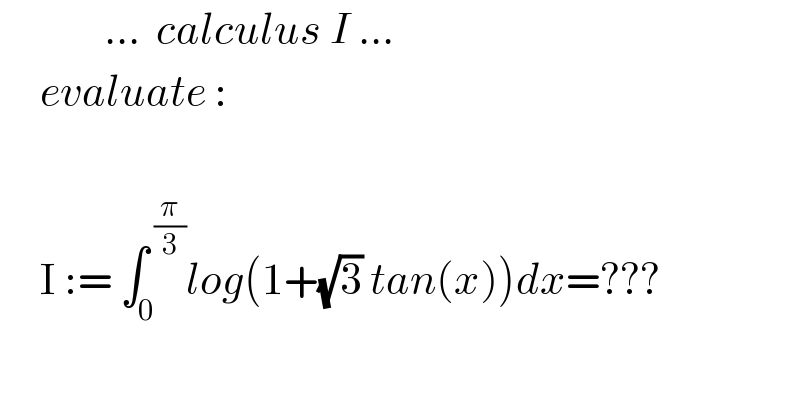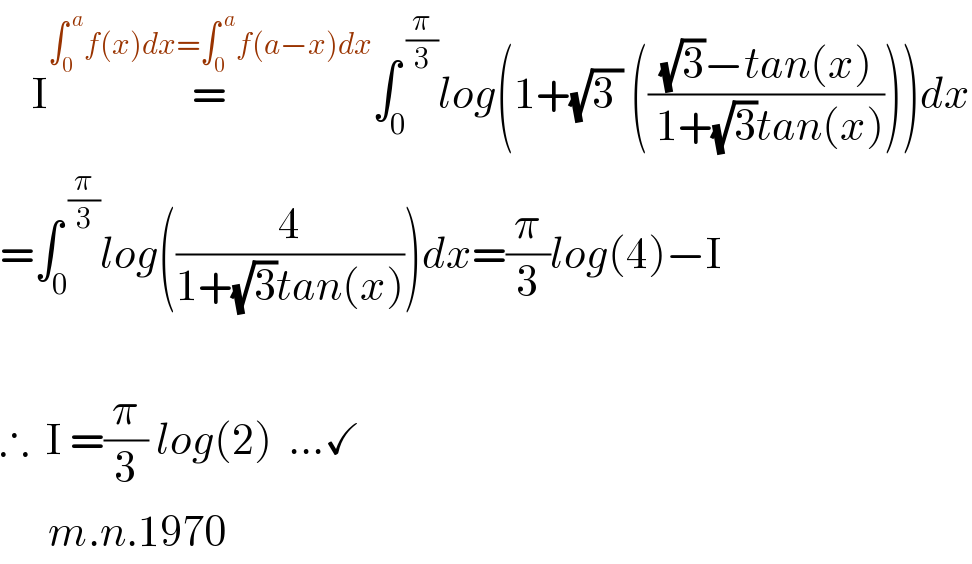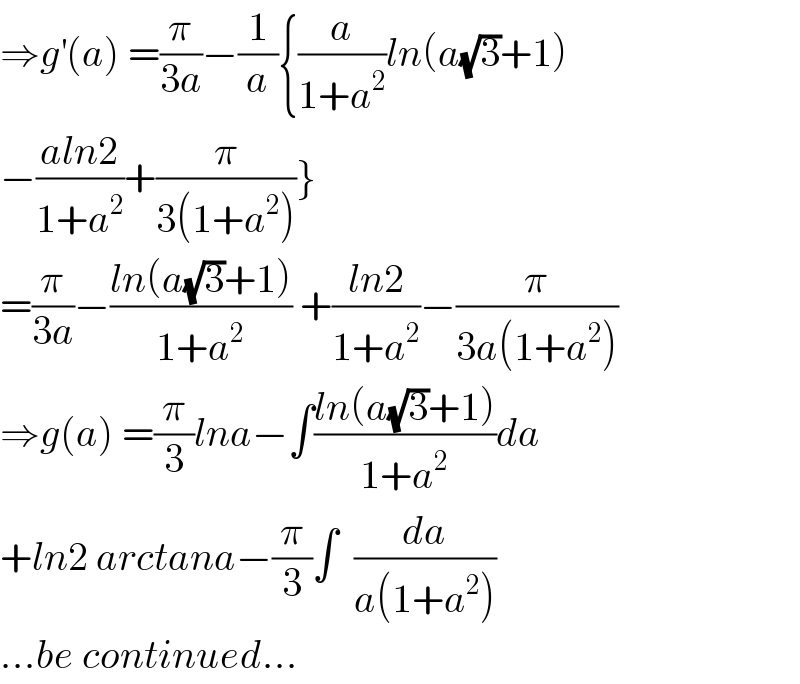
Question and Answers Forum
Question Number 116284 by mnjuly1970 last updated on 02/Oct/20

Answered by Dwaipayan Shikari last updated on 02/Oct/20
![I=∫_0 ^(π/3) log(cosx+(√3)sinx)−log(cosx)dx =[∫_0 ^(π/3) log(sin((π/6)+x))−log(cosx)]→(I_0 )+∫_0 ^(π/3) log(2)dx =[∫_0 ^(π/3) log(sinx((π/2)−x))−log(cos((π/3)−x))]→(I_0 )+(π/3)log(2) 2I_0 =∫_0 ^(π/3) log(cosx)−log(cosx)+(1/2)cosx−(1/2)cosx+((√3)/2)sinx−((√3)/2)sinx I_0 =0 So I=I_0 +(π/3)log(2) I=(π/3)log(2)](Q116287.png)
Commented by mnjuly1970 last updated on 02/Oct/20

Commented by Dwaipayan Shikari last updated on 02/Oct/20
��
Answered by mnjuly1970 last updated on 02/Oct/20

Answered by Bird last updated on 03/Oct/20
![let g(a) =∫_0 ^(π/3) ln(1+atanx)dx ⇒ g^′ (a) =∫_0 ^(π/3) ((tanx)/(1+atanx))dx =(1/a)∫_0 ^(π/3) ((1+atanx−1)/(1+atanx)) dx =(π/(3a)) −(1/a)∫_0 ^(π/3) (dx/(1+atanx)) but ∫_0 ^(π/3) (dx/(1+atanx)) =_(tanx=t) ∫_0 ^(√3) (dt/((1+t^2 )(1+at))) let decompose F(t) =(1/((at+1)(t^2 +1))) F(t) =(α/(at+1)) +((mt+n)/(t^2 +1)) α =(1/((1/a^2 )+1)) =(a^2 /(1+a^2 )) lim_(t→+∞) tF(t) =0 =(α/a) +m ⇒ m=−(α/a) =−(a/(1+a^2 )) F(0)=1 =α +n ⇒n=1−α =1−(a^2 /(1+a^2 )) =(1/(1+a^2 )) ⇒F(t)=(a^2 /((1+a^2 )(at+1)))+((−(a/(1+a^2 ))t+(1/(1+a^2 )))/(t^2 +1)) ⇒∫_0 ^(π/3) (dx/(1+atanx)) =(a^2 /(1+a^2 ))∫_0 ^(√3) (dt/(at +1))−(a/(1+a^2 ))∫_0 ^(√3) (t/(t^2 +1))dt +(1/(1+a^2 )) ∫_0 ^(√3) (dt/(1+t^2 )) =(a/(1+a^2 ))[ln(at+1)]_0 ^(√3) −(a/(2(1+a^2 )))[ln(1+t^2 )]_0 ^(√3) +(1/(1+a^2 ))×(π/3) =(a/(1+a^2 ))ln(a(√3)+1)−(a/((1+a^2 )))ln2 +(π/(3(1+a^2 )))](Q116314.png)
Commented by Bird last updated on 03/Oct/20

